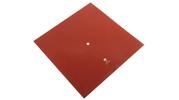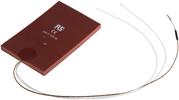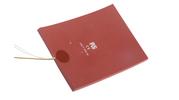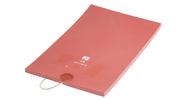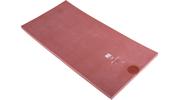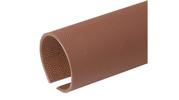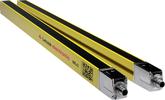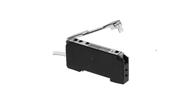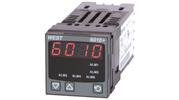Работаем с юридическими лицами, бюджетными организациями, ИП
По вопросам приобретения товара пишите на info@chiply.ru
RS Pro General Purpose 3 Wire Pt100 Bayonet Style PRT Probe_x000D_
From RS Pro a high-quality and reliable Pt100 PRT (Platinum Resistance Thermometer) or RTD (Resistance Temperature Detector) sensing probe. This RTD probe has a robust construction with the sensing element encased in a rigid 316 stainless steel sheath and a bayonet fitting feature. The leads have a durable fibreglass insulation and are covered with a rugged stainless steel overbraid. This platinum resistance thermometer provides accurate and reliable temperature measurement for a wide range of applications._x000D_
What is an RTD?_x000D_
An RTD is a type of temperature sensor based on the correlation between metals and temperature. As the temperature of a metal increases so does its resistance to the flow of electricity. This resistance can be measured and converted to a temperature reading. In a Pt100 RTD, the Pt stands for platinum (platinum wire or film) and 100 means that the temperature sensor has a resistance of 100 Ohms at 0°C. Platinum is the most reliable metal due to its linear resistance to temperature relationship over a large temperature range._x000D_
What is a Bayonet Style Platinum Resistance Thermometer?_x000D_
The probes of these Pt100 sensors have an adjustable screw threaded stainless steel spring 250 mm long with a slotted bayonet fixing cap. The bayonet cap screws along this spring and allows the immersion length of the sensor probe to be adjusted. Once in place, the bayonet cap is secured to a bayonet adapter (which must be purchased separately allowing the temperature sensor to be firmly held in place within the recess. The other end of the probe is terminated by 3 insulated wire tails which are connected to the temperature measuring equipment._x000D_
Features and Benefits_x000D_
High stability sensing element with a precision output_x000D_
IEC 60751 Class B accuracy/tolerance_x000D_
Adjustable bayonet fitting_x000D_
Rigid 316 corrosion resistant stainless 6mm diameter steel sheath for protection of sensing element_x000D_
Leads with durable fibreglass insulation and a rugged stainless steel overbraid_x000D_
3 lead wires for an accurate reading_x000D_
Applications_x000D_
These bayonet style PRT sensors are designed for direct installation into the process. The bayonet fitting makes them suited for applications where the probe tip is fitted directly into a drilled hole or recess in machinery._x000D_
Air conditioning and refrigeration_x000D_
Chemical industry_x000D_
Plastics processing_x000D_
Stoves and grills_x000D_
Air, gas and liquid temperature measurement_x000D_
Exhaust gas temperature measurement_x000D_
Food processing_x000D_
Laboratories_x000D_
Frequently Asked Questions_x000D_
How Does a PRT Temperature Sensor Work?_x000D_
The PRT temperature sensor works by placing the sensor element (or process end) into the equipment or process that requires temperature measurement. As the temperature of the platinum resistance thermometer increases its resistance to the flow of electricity increases. For every increase per degree of temperature the electrical resistance also changes by a set ratio, this is called the temperature coefficient. For platinum, this ratio is .00385 ohm/ohm/°C which means for a Pt100 with a 100 ohm resistance the increase in resistance per degree of temperature would be 0.385 ohms. The total resistance reading can, therefore, be measured and converted into temperature._x000D_
How is the Resistance Measured?_x000D_
The resistance generated by the temperature sensor is measured by passing current through one of the wires to produce a voltage. This voltage is then measured using a suitable bridge or voltmeter and the resistance calculated in ohms using Ohms Law (R=V/I). Once the resistance is known you can convert it to a temperature reading using a calibration equation or a Pt100 table. A temperature measurement device or calibrator can also be connected to the leads of the probe that will automatically convert the measured resistance into a temperature reading.
Наш менеджер свяжется с вами в ближайшее время


